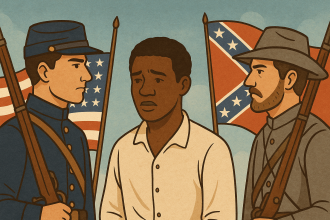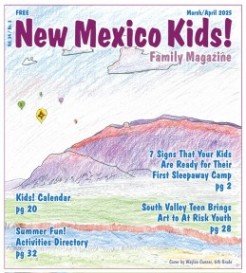Young Historian: The Civil War
Young Historian: The Civil War
June 11, 2025By KELI HOLT

In April 1861, the United States went to war with itself. This war, called the Civil War, happened just 78 years after the original 13 colonies had won independence from Britain. Even though the country had been united for many years, people in the North and South were growing more divided. Many Southerners felt that their way of life was too different from the North’s, and they wanted to start their own country. This new nation was called the Confederate States of America, or the Confederacy. While their constitution was almost the same as the U.S. Constitution, it clearly protected the right to own enslaved people, which was a major reason for the war.
Background
When America became independent in 1783, slavery was legal in all states. Some of the country’s leaders, called the Founding Fathers, knew slavery was wrong and hoped it would eventually end. They also saw that it didn’t make sense to create a country based on freedom while keeping millions of African people in slavery.
In the North, farming was difficult because of cold winters and rocky soil. Most people had small farms and didn’t rely on slavery. Instead, they earned a living by fishing, building ships, and trading. Over time, many Northern states passed laws to end slavery.
But in the South, the warm weather and rich soil were perfect for large farms, called plantations, which grew crops like cotton, tobacco, and rice. These crops needed lots of hard work, and plantation owners forced enslaved people to do that work. Many Southern leaders were rich because of slavery, so they didn’t want to give it up. When the U.S. Constitution was written in 1787, it allowed slavery to continue as a compromise between the North and South.
As America grew and new land was added, people began to argue about whether slavery should be allowed in new states. Many Southerners believed that enslaved people were their property and that they had the right to bring them anywhere. People in the North strongly disagreed, especially as more Northern states had ended slavery.
In 1820, the U.S. made a deal called the Missouri Compromise. It allowed Missouri to join the country as a slave state and Maine as a free state. It also made a rule: any new states north of a certain line would be free, and those south of it could allow slavery.
But this didn’t last. After winning land from Mexico in the 1840s (places that would become states like California, Arizona, and New Mexico), people started arguing again. Southerners wanted slavery in these new areas. Northerners were very upset and worried that slavery would spread even more.
To avoid a crisis, Congress passed the Compromise of 1850. It let California join as a free state but said people in New Mexico and Utah could vote on whether to allow slavery. The deal also included the Fugitive Slave Act, which made it illegal for people in the North to help people who had escaped slavery. This law angered many Northerners because it forced them to help with something they believed was wrong.
In 1854, another law called the Kansas-Nebraska Act let people in those areas vote on slavery—even though they were supposed to be free under the Missouri Compromise. People from both the North and South rushed into Kansas just to vote. Fighting broke out, and the area became very violent. This time became known as “Bleeding Kansas.”
By the late 1850s, the peace between free and slave states had completely fallen apart. The South was afraid that the more powerful North would soon pass a law to end slavery everywhere. The North was afraid that slavery was spreading too far and too fast.
When Abraham Lincoln was elected president in 1860, many Southerners believed he would try to get rid of slavery. Before he even took office, some Southern states left the United States and formed the Confederacy. The Civil War had begun—a brutal four-year fight that would become the deadliest war in American history. In the end, the North won, and the country was reunited. Most importantly, slavery was finally abolished, and millions of enslaved people were freed.




